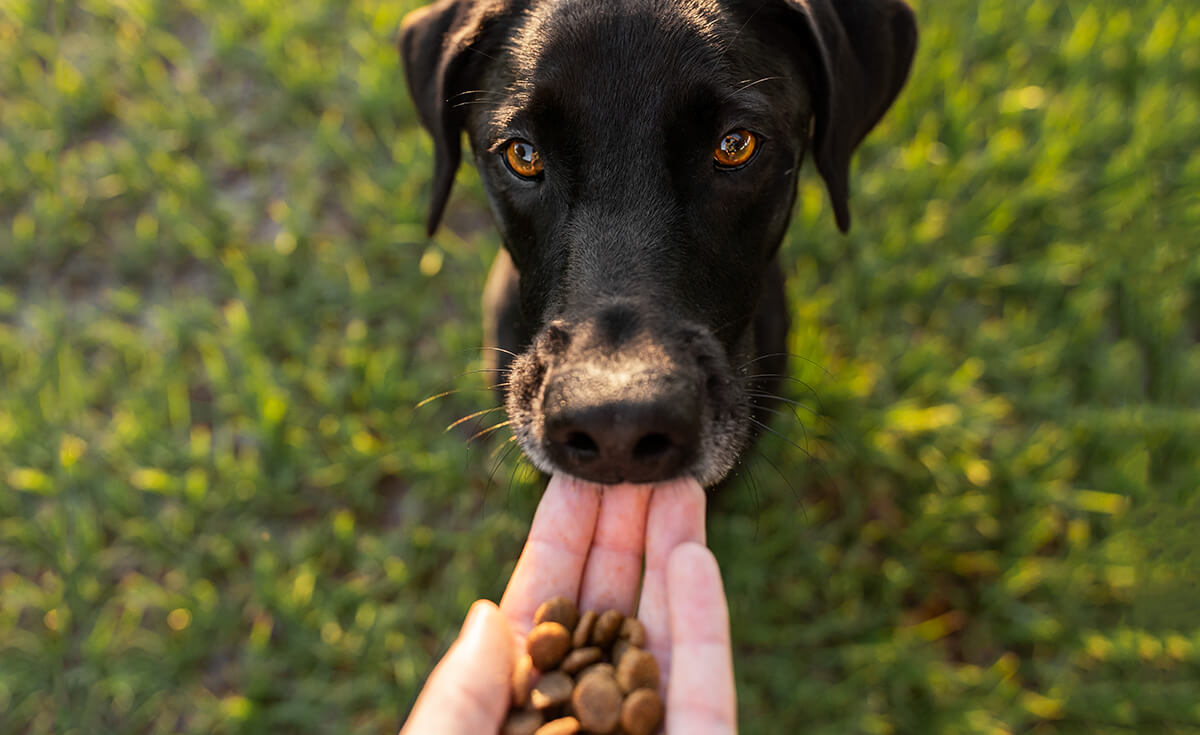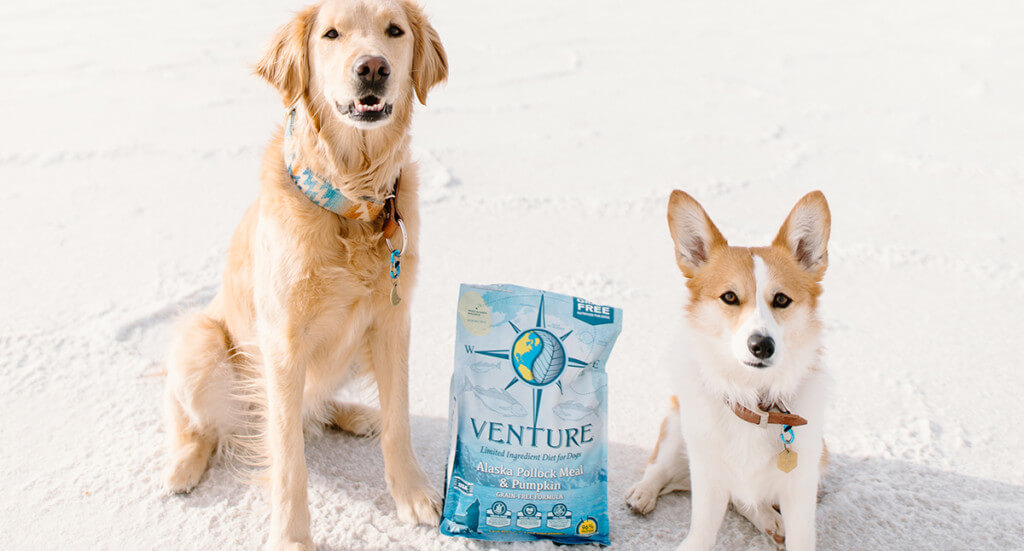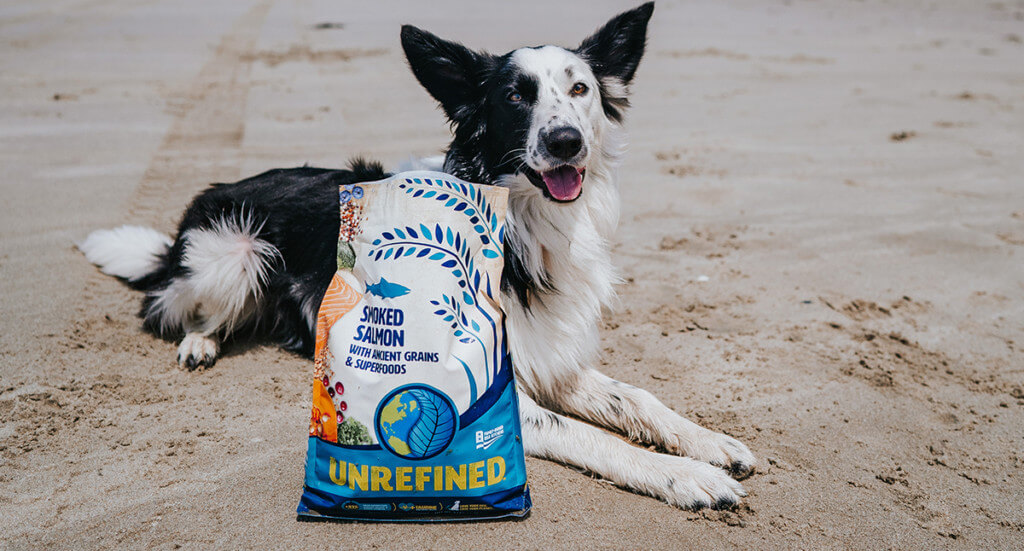Choosing the Best Food For a Dog with Allergies
As a pup parent, it’s heartbreaking to see your furry friend suffer from allergies. But just like humans, dogs can develop allergies to a variety of substances – including certain types of food.
In this article, we’ll delve deeper into the different types of allergies that can affect dogs, what causes them, and how the right diet can help manage these allergies. We’ll also provide some tips on how to switch your dog to a new food and other ways to relieve their symptoms.

Do Dogs Get Allergies?
Yes, dogs can indeed get allergies. Dog allergy symptoms can range from mild to severe and can affect different parts of the body. Some dogs may show dog food allergy symptoms such as gastrointestinal issues or skin problems. These symptoms can include vomiting, diarrhea, and itchy skin. In some cases, dogs may also develop hives or a skin rash, which can be quite uncomfortable for them.
Other dogs may exhibit dog seasonal allergy symptoms like sneezing, runny nose, or itchy eyes. These symptoms are often similar to those experienced by humans with seasonal allergies and can be triggered by the same allergens, such as pollen, dust mites, or mold spores.
A skin rash is a common dog allergy symptom, and it can appear as red, inflamed patches on the skin or small bumps. The rash can be localized to one area of the body or spread across multiple areas. It’s often accompanied by intense itching, which can lead to further complications if the dog scratches or bites at the affected areas.
If you find yourself wondering, “does my dog have allergies?”, it’s best to consult with a vet for a proper diagnosis. They can perform tests to determine the cause of your dog’s symptoms and recommend appropriate treatments.
Different Types of Dog Allergies
There are several types of allergies that can affect dogs. A dog pollen allergy can lead to itchy eyes and allergy bumps on dogs thanks to airborne pollen particles. These bumps, also known as hives or urticaria, can appear suddenly and can cause significant discomfort for your dog. They’re often accompanied by other symptoms such as redness, swelling, and itching.
Dog seasonal allergies are also common and can cause symptoms similar to hay fever in humans. These can include sneezing, runny nose, watery eyes, and itching. Dogs with seasonal allergies may also show signs of discomfort such as paw licking or chewing, rubbing their face on the carpet, or excessive scratching.
Food allergies, such as a chicken allergy in dogs can cause a range of symptoms, from digestive issues to skin problems. Dogs with food allergies may experience vomiting, diarrhea, or changes in appetite. They may also develop skin symptoms such as hives, redness, or itching. In severe cases, a food allergy can lead to anaphylaxis, a life-threatening allergic reaction.
Environmental allergies in dogs and grain allergy in dogs are also common. Environmental allergies can be triggered by a variety of substances, including dust mites, mold spores, and certain types of grass or plants. Grain allergies, on the other hand, are usually caused by an immune response to proteins found in grains such as wheat, corn, or soy.
What Causes Allergies in Dogs?
Allergies in dogs are caused by an overreaction of the immune system to a harmless substance, such as pollen or a specific food ingredient. This overreaction can lead to allergic dermatitis, a condition characterized by itchy, inflamed skin. Allergic dermatitis can be triggered by a variety of allergens, including food ingredients, environmental allergens, or substances that come into contact with the dog’s skin, such as certain types of grass or plants.
Grain allergy in dogs is a common cause of food allergies. In this case, the dog’s immune system mistakenly identifies proteins found in grains as a threat and launches an immune response. This response can lead to a variety of symptoms, from digestive issues to skin problems.
Pollen is another common allergen that can cause allergies in dogs. A dog pollen allergy can lead to symptoms such as sneezing, runny nose, and itchy eyes. Dogs with pollen allergies may also develop skin symptoms, especially if they come into direct contact with the allergen.
Certain dog breeds prone to skin problems are more likely to develop allergies. These breeds include Bulldogs, Retrievers, and Terriers, among others. However, any dog can develop allergies, regardless of their breed.
If you’re wondering what causes skin allergies in dogs, it’s usually a combination of genetic predisposition and exposure to allergens. Some dogs may be genetically predisposed to develop allergies, while others may develop allergies as a result of their environment or diet.
Dog Food for Sensitive Stomachs & Food Allergies
For dogs with food allergies or a sensitive stomach, hypoallergenic dog food or limited-ingredient dog food can be beneficial. These specialized diets are designed to minimize the risk of an allergic reaction and are often recommended for dogs with food intolerance.
Hypoallergenic dog food is made with a limited number of ingredients to reduce the risk of an allergic reaction. These foods often use novel proteins and carbohydrates that your dog has not been exposed to before, reducing the likelihood of an immune response.
Limited ingredient dog food, on the other hand, contains fewer ingredients than traditional dog food, making it easier to identify any ingredients that may be causing an allergic reaction. These foods are often free from common allergens such as wheat, soy, and dairy.
If your dog has a sensitive stomach, you might want to consider sensitive skin and stomach dog food. These foods are formulated to be easily digestible and gentle on the stomach, reducing the risk of gastrointestinal upset. They may also contain ingredients that promote skin health, such as omega-3 fatty acids.
For dogs with severe food allergies or a very sensitive stomach, wet dog food for sensitive stomachs may be a good option. Wet food is often easier to digest than dry food, and it can be a good choice for dogs with oral health issues or those that struggle to chew dry kibble.
Grain Allergy in Dogs
A grain allergy is a common type of food allergy in dogs. If you’re wondering, “is grain free food good for dogs?” or “can dogs eat wheat?”, the answer depends on the individual dog. For dogs with a grain allergy, the best grain free dog food can help alleviate symptoms.
Grain allergies in dogs can cause a variety of symptoms, including skin problems, gastrointestinal upset, and ear infections. These symptoms can be uncomfortable for your dog and can lead to further health issues if left untreated.
If your dog is itching a lot, a hypoallergenic dog food or grain-free dog food might be the solution. Hypoallergenic dog foods are designed to minimize the risk of an allergic reaction, and they can be a good option for dogs with grain allergies.
However, it’s important to note that not all dogs need a grain-free diet. Some dogs can tolerate grains well, and grains can be a good source of nutrients. If you’re considering switching your dog to a grain-free diet, it’s best to consult with your veterinarian first.
Can a Dog’s Diet Help Relieve Skin Allergies?
Absolutely! Options like fish-based dog food for allergies or hypoallergenic dog food can help manage skin allergies in dogs. Fish-based dog foods are rich in omega-3 fatty acids, which are known for their anti-inflammatory properties. These foods can help reduce inflammation in the skin, alleviating symptoms such as redness, itching, and swelling.

The best dog food for skin allergies will contain high-quality ingredients and beneficial supplements like omega-3 fatty acids and omega-6 fatty acids. Omega-3 and omega-6 fatty acids are essential fats that play a crucial role in skin health. They help maintain the skin’s natural barrier, keeping allergens out and moisture in. They also have anti-inflammatory properties, which can help reduce the inflammation associated with skin allergies.
These nutrients can help reduce inflammation and improve skin health, helping to alleviate allergy bumps on dogs and skin rash dog allergy symptoms. Allergy bumps, or hives, are a common symptom of skin allergies in dogs. They appear as raised, red bumps on the skin and can be quite itchy. A diet rich in omega-3 and omega-6 fatty acids can help reduce the inflammation that leads to these bumps, providing relief for your dog.
In addition to omega-3 and omega-6 fatty acids, the best dog food for skin allergies will also contain other beneficial ingredients, such as antioxidants and probiotics. Antioxidants can help protect the skin cells from damage, while probiotics can support gut health, which is closely linked to skin health.
Our Dog Food for Skin Allergies
When selecting the best dog food for skin allergies, it’s crucial to consider your dog’s individual needs. For some dogs, the best grain-free dog food for skin allergies might be the ideal choice, while others might benefit more from a hypoallergenic or limited ingredient dog food.
Earthborn Holistic offers a variety of recipes that cater to dogs with allergies. For instance, our Venture Rabbit Meal & Pumpkin limited-ingredient recipe is a chicken-free, limited-ingredient option that’s great for dogs that need a little extra help keeping their stomachs happy. Another protein option is turkey. If your dog needs to lose a few pounds while also balancing allergies, our Weight Control recipe is made with turkey, a great protein for dogs with allergies to chicken.
For dogs with grain allergies, we offer grain-free recipes that are also gluten-free, making it easy to find a suitable diet for your furry friend. Our Coastal Catch recipe is a grain free formula for all life stages made with a powerful blend of herring, salmon, and Pacific whiting protein meals, known for high omega-3 fatty acid content. This can help maintain healthy skin and coat, making it a great option for dogs with skin allergies.
In addition, our UNREFINED Smoked Salmon recipe is an excellent choice for puppies dealing with skin issues. This ancient grain formula is made with fresh salmon protein, which is rich in omega-3 and omega-6 fatty acids. These essential fats are known for their skin health benefits and anti-inflammatory properties, making this recipe a great option for puppies with skin allergies.
Remember, it’s always important to consult with your vet before making any significant changes to your dog’s diet. They can provide personalized advice based on your dog’s specific needs and health status.

Switching to a New Dog Food
Switching your dog to a new food should be done gradually to avoid overfeeding, underfeeding, or changing dog food too quickly symptoms. A sudden change in diet can cause gastrointestinal upset, including vomiting, diarrhea, and loss of appetite. It can also lead to weight changes – either weight gain from overfeeding or weight loss from underfeeding.
When switching dog food, start by mixing a small amount of the new food with your dog’s current food. Gradually increase the amount of new food over a week or two, while decreasing the amount of the old food. This gradual transition can help your dog’s digestive system adjust to the new food, reducing the risk of gastrointestinal upset.
It’s also important to monitor your dog closely during the transition period. Look for any changes in your dog’s behavior, appetite, or stool consistency. If you notice any concerning changes, such as loss of appetite, vomiting, or diarrhea, it’s best to consult with your vet.
If you’re unsure about how to change dog food, consult with your vet for guidance. They can provide personalized advice based on your dog’s specific needs and health status. They can also recommend appropriate dog foods based on your dog’s age, breed, weight, and health condition.
Other Ways to Relieve Your Dog’s Allergies
In addition to dietary changes, there are other ways to relieve your dog’s allergies. Over the counter allergy medicine for dogs can provide temporary relief for some symptoms, but it’s always best to consult with your vet before giving your dog any new medication. Over the counter allergy medicines can include antihistamines, which can help reduce symptoms such as itching, redness, and swelling.
There are also natural remedies for allergy relief for dogs, such as certain supplements or changes to your dog’s environment. For example, regular bathing can help remove allergens from your dog’s skin and coat, reducing symptoms. Certain supplements, such as omega-3 fatty acids or probiotics, can also support skin health and reduce inflammation.
If you’re wondering how to treat dog allergies or looking for a dog allergy supplement, your vet can provide personalized advice based on your dog’s specific needs. They can recommend appropriate treatments, whether that’s a change in diet, medication, supplements, or lifestyle changes.
Is Your Dog’s Diet Right for Them?
Choosing the right food for a dog with allergies can make a big difference in their comfort and quality of life. By understanding the different types of allergies, what causes them, and how diet can help manage them, you can make informed decisions about your dog’s nutrition.
Remember, every dog is unique, and what works for one dog may not work for another. Always consult with your vet before making any significant changes to your dog’s diet or starting any new treatments for allergies. With the right care and attention, your dog can live a happy, healthy life, even with allergies.




